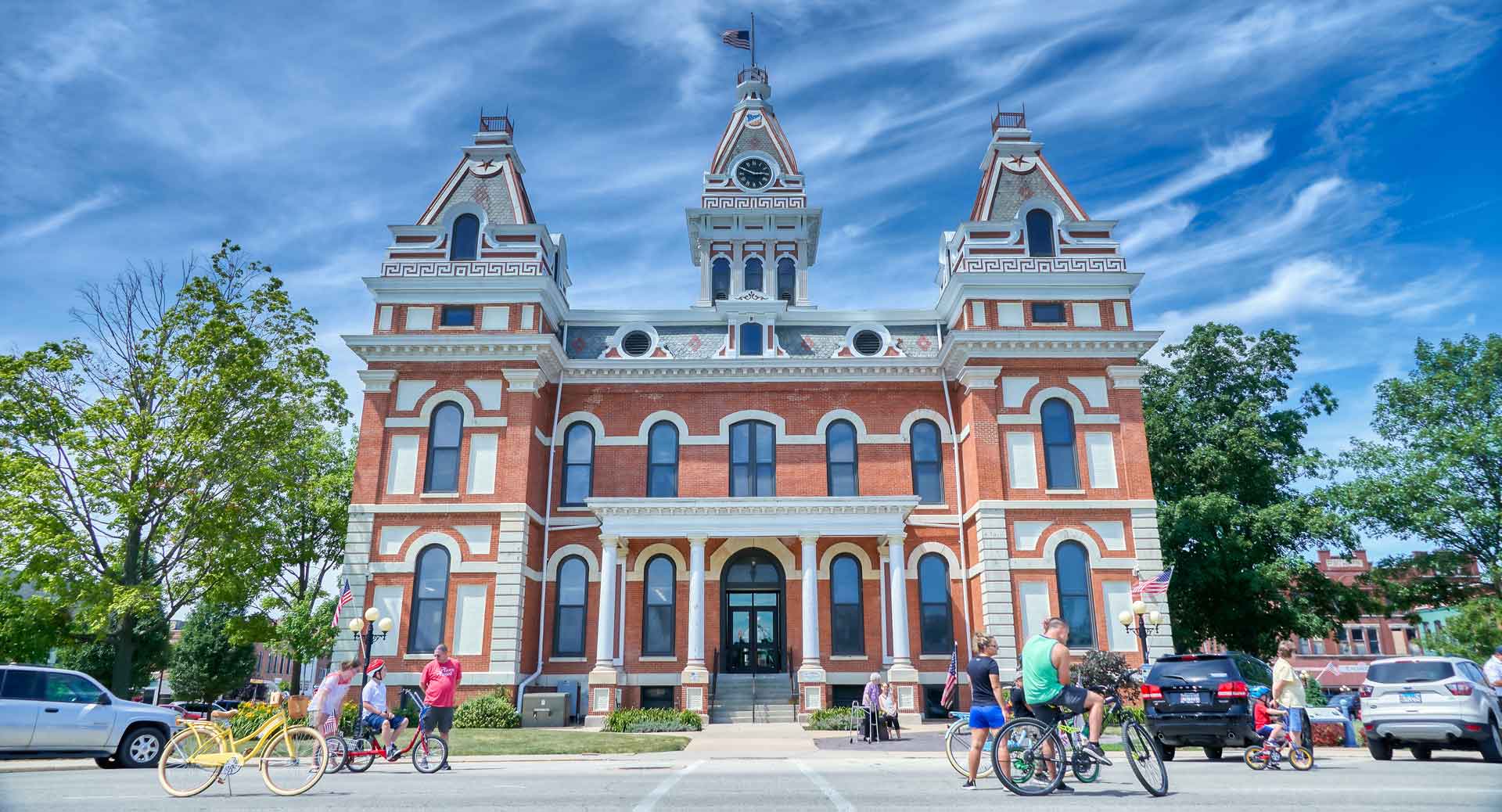
Pontiac’s Shoe Manufacturing History
Stepping Up to Consumer Demands
The history of shoemaking in Pontiac began with one of the training options available to young men under the supervision of the officials at the Illinois State Boys Reformatory. The reformatory, which opened in 1871, was essentially a correctional school for boys ages 8-16. The boys sent to Pontiac had either committed a crime or by some other means become wards of the state. While at the institution, the boys were expected to learn, at the very least, the rudiments of a trade — a career path that would help them to develop into respectable and law-abiding members of society. Woodworking, baking, blacksmithing, tailoring, pipefitting, engine repair, and of course, shoemaking were among the alternatives from which the boys could choose. Those who selected shoemaking learned their new trade both by working as an apprentice for a master shoemaker and by serving as a machine operator in a small shoe factory located inside the reformatory.
Between 70-80 young men were employed making shoes in the reformatory factory. Nearly 300 pairs of boots or shoes were turned out daily. The contractors, Tead & Son, paid 18 cents per six-hour workday for the services of each boy. In 1881, the local firm Lyon and Legg entered into an agreement with the reformatory and took over the marketing and sales of the shoes from Tead & Son.
Clark Edgar Legg, a native of West Virginia, moved to Illinois with his parents at the age of 1. As a young man, he worked as a clerk in D.M. Lyon’s downtown Pontiac retail shoe outlet. Later, the two men became partners and using the connection to the reformatory shoe factory, built a successful footwear business. Their company was later succeeded by R.P. Smith Sons and Co., a Chicago-based shoe seller established in 1859.
In 1889, C.E. Legg formed his second shoe manufacturing business, the Pontiac Shoe Manufacturing Company, makers of the “Pontiac’s Wear Well” line of shoes. By 1918, the factory produced 1,500 pairs of ladies’ and children’s shoes and slippers daily. The factory employed as many as 500 workers with sales reaching $440,000 per year — about $9.17 million in 2024 dollars.
Almost immediately, other shoemaking concerns came to the city and added to Pontiac’s growing industrial sector. In 1901, the Peasley Shoe Company of Rock Island built a factory here. However, Peasley Shoes did not last long; two years later, the Modern Shoe Company started in the former Peasley shoe factory. They made shoes using the Goodyear Welt construction technique and the McKay shoe sewing method. The Modern Shoe Company operated here in Pontiac until 1913 when it closed.
Also in 1903, C.E. Legg’s brother, Achalis Morris Legg, established his own shoe company. The manufacturing facility for the A.M. Legg Shoe Company was known locally as the “West Side Shoe Factory.” The company’s most notable product was a line of women’s shoes marketed as “Dr. Legg’s Foot Ease.” Within a short time, the A.M. Legg Shoe Company bought Peasley Shoe’s patents and some of its equipment, dramatically increasing the company’s levels of production with sales reaching $200,000 by 1918. A.M. Legg manufactured “Wilson-Sewed” shoes under license from Wilson Process Inc. of New York City.
1906 saw the creation of the L.T. Dunn Shoe Co. in Pontiac. The Dunn Company made high-grade shoes for men and women and specialized in their line of children’s and babies’ soft-soled footwear.
By the late ‘20s and early ‘30s, Pontiac’s place in the shoe industry was eroding. The fiscal realities of the Great Depression led to the closure of many small manufacturing concerns across the country. The story was no different in Pontiac as two shoe factories shuttered their doors. In 1931, the A.M. Legg Shoe Company shut down. And after 46 years as a shoemaker, C.E. Legg closed his factory in 1935. Neither company could compete in a collapsing marketplace where bankrupt shoe firms were selling out their entire stock at prices below cost to stave off creditors.
However, the Great Depression did not shut down Pontiac’s shoe industry completely. In 1933, the Fashion-Bilt Shoe Company of Chicago opened a production facility here. By the early 1960s, the Fashion-Bilt factory employed more than 500 workers. In 1941, the Brockton Heel Company of Brockton, MA, acquired the former Pontiac Shoe Company building to open a heel factory. A second heel producer, the Pontiac Heel Company, competed with Brockton Heel for many years. However, by the middle of the 1980s, both heel makers and all shoe factories in Pontiac were closed.
Pontiac Shoe Manufacturers
- Illinois Boys Reformatory School (Small factory used for training boys)
- Pontiac Shoe Manufacturing Co.
- M. Legg Shoe Company
- Peasley Shoe Company
- Modern Shoe Company
- Rele-Royal Shoe Company
- T. Dunn Shoe Company
- Fashion-Bilt Shoe Company
- Brockton Heel Company
- Pontiac Heel Company
